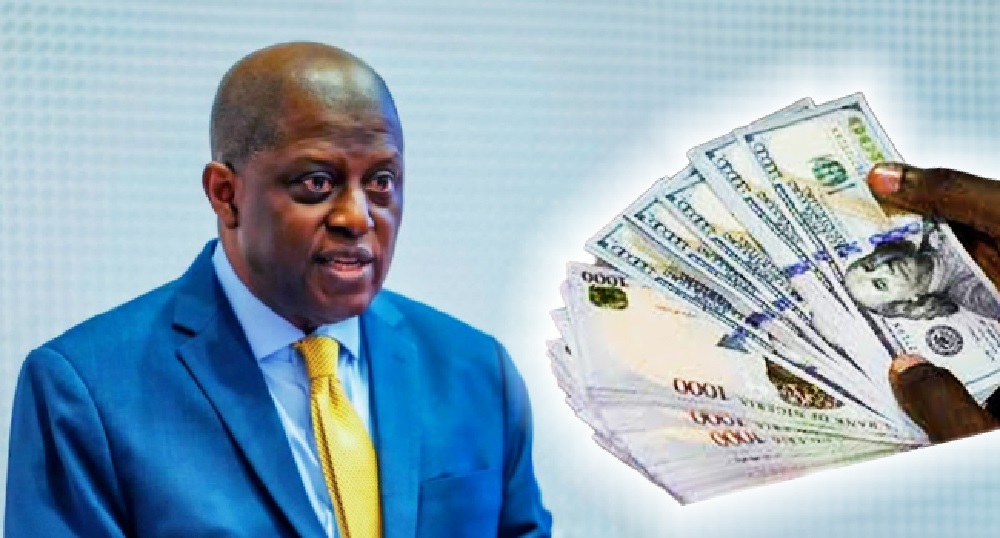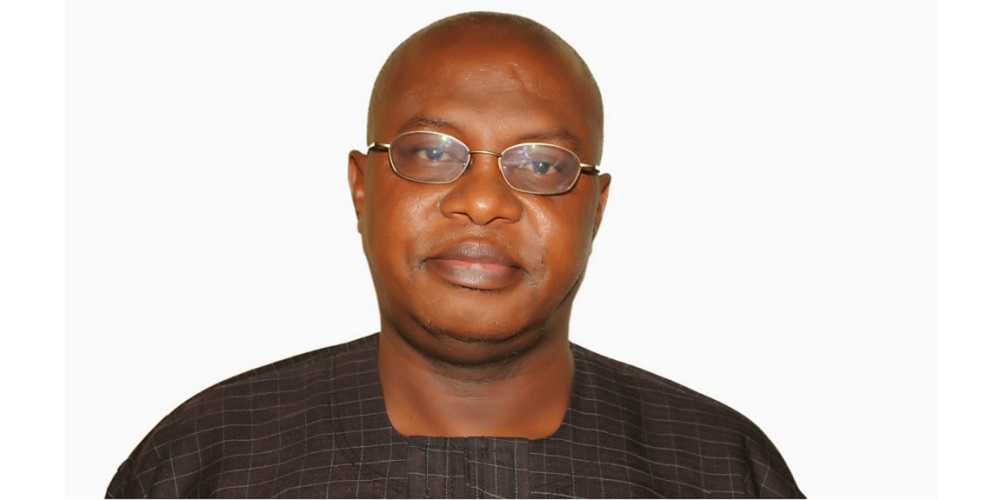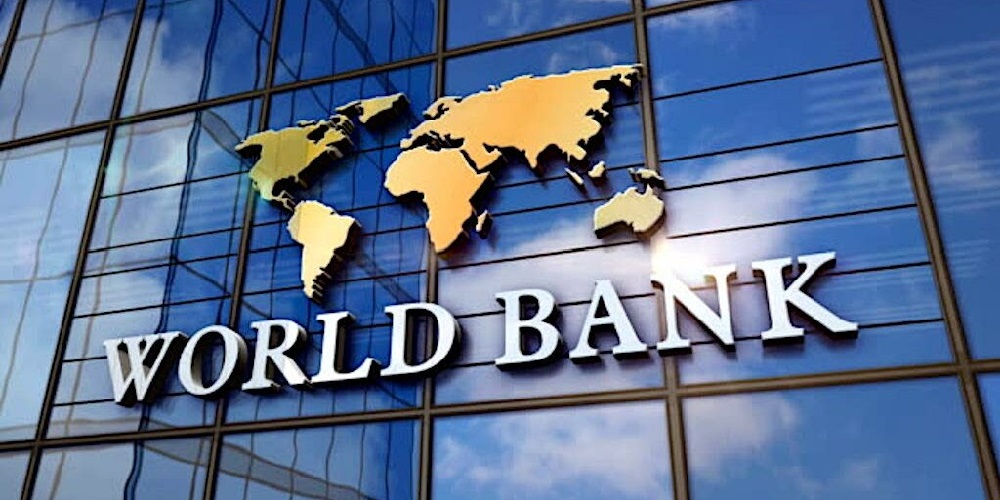Opinion
5G,IoT and AI to boost global GDP by 2030

By Sonny Aragba-Akpore
With Mobile technologies and services now generating around 5.8% of global Gross Domestic Product (GDP) a contribution that amounts to about $6.5 trillion of economic value, there are strong projections that by 2030, this figure will rise to almost $11 trillion, or 8.4% of GDP.
Global System of Mobile Communications Association (GSMA) says much of this will be driven by countries around the world increasingly benefiting from the improvements in productivity and efficiency brought about by the increased take-up of mobile services and digital technologies, including 5G, Internet of Things (IoT) and Artificial Intelligence (AI).
The GSMA recently introduced the 5G Connectivity Index to provide insights into 5G performance in 39 markets in order to encourage informed decision-making.
In terms of Economic Impact,
the GSMA emphasizes the economic benefits of mobile technologies and services, including 5G, projecting that they will contribute significantly to GDP growth by 2030.
“The GSMA provides specific reports and analyses on 5G in different regions, such as Sub-Saharan Africa, Asia ,Middle East among others highlighting the progress and challenges of 5G deployment in specific areas.”
In Sub Saharan Africa for instance with particular attention on Nigeria,South Africa,Egypt,Kenya and Botswana among others some measure of progress in deployment has been recorded.
The rollout of 5G has brought immense benefits across multiple industry sectors, particularly those involving internet of things (IoT) and artificial intelligence (AI) applications in which the real-time transfer of data is crucial.
More broadly, the adoption of 5G is expected to accompany increased data use across the globe, with forecasts anticipating mobile data traffic of over 300 exabytes per month by 2030, more than twice the volume consumed in 2024 according to Statista.
And with a third of global population expected to be covered by this fifth generation (5G) networks ,a technology that has defined new ways of communication by 2025 ,GSMA
says the technology has surpassed growth projections of all times.
“5G subscriptions increased by 163 million during the third quarter 2024 to total 2.1 billion. 5G subscriptions reached close to 2.3 billion by the end of 2024 accounting for more than 25 percent of all global mobile subscriptions.
“4G subscriptions continue to decline as subscribers migrate to 5G” according to GSMA.
As of the first quarter of 2024, there were nearly two billion 5G connections worldwide, with 185 million new additions. This is expected to grow to 7.7 billion by 2028.”
Statistics show that 5G is the fastest-growing mobile broadband technology, reaching 1.5 billion connections by the end of 2023.
It only took four years to reach this number, compared to 10 years for 3G and more than five years for 4G.
“5G is more than a new generation of technologies; it denotes a new era in which connectivity will become increasingly fluid and flexible.5G Networks will adapt to applications and performance will be tailored precisely to the needs of the user” GSMA submits.
By covering one-third of the world’s population , impact on the mobile industry and its customers will be profound according to GSMA.
To deepen the spread of 5G ,GSMA is working closely with the mobile operators pioneering 5G, “by engaging with governments, vertical industries including automotive, financial services, healthcare providers, transport operators, utilities and other industry sectors to develop business cases for 5G.”
And In order to accelerate the growth and spread, many operators are said to be deploying
AI technology as part of an integral part of telecoms operators’ strategic and operational plans.
“Operators are making important advancements in the deployment of AI technology, which is serving as a transformative force shaping the telecoms industry. By deploying autonomous AI-based systems, operators can enhance operational efficiency, customer satisfaction and security, while also creating new revenue opportunities”.
China, South Korea, the United Kingdom, Germany, and the United States are the leading countries with robust 5G coverage in the world.
Since the first commercial launches of the fifth generation of mobile networks in late 2018, these five countries have emerged as leaders because multiple companies in these countries have deployed networks and are selling compatible devices. Countries including Switzerland and Finland are up and comers in 5G development, though they have limited deployment.
In China there are three Companies leading in deployment.
The world’s largest 5G network was launched by the three largest Chinese network operators Oct 31, 2019, according to the state-run news agency Xinhua. These are China Mobile, China Unicom, and China Telecom which all activated their networks in less than five months after they were issued 5G licenses.
Each of the network operators offered their 5G services at $18 per month in 50 Chinese cities at the beginning of the launch.
GSMA expects 36% of China’s mobile users to be using 5G by 2025. That’s about 600 million subscribers, who would also make up 40% of the entire global 5G market by this year.
This is all despite efforts made by the United States government to hamper the progress of Chinese vendors, though those efforts may affect how Chinese companies may expand into the global market.
In South Korea,SK Telecom and Korea Telecom run as the main competitors for the South Korean 5G market.
SK Telecom acquired spectrum in the 3.5 GHz and 28 GHz frequencies to prepare for deploying 5G.
In April of 2019, the Enterprise claimed to be the first mobile carrier in the world to launch 5G services to work on 5G smartphones. SK Telecom asserted an edge over rival Verizon, as the former launched 5G services available at the same time as Samsung Galaxy S10 5G smartphone launched in South Korea. Verizon launched mobile 5G services in the U.S. before a 5G enabled smartphone was available to U.S. consumers.
SK Telecom also conducted tests with a 5G Standalone (SA) Core (a core not reliant on the 4G network) for their 5G network in cooperation with Samsung Electronics.
The world’s largest 5G network was launched by the three largest Chinese network operators Oct 31, 2019, according to the state-run news agency Xinhua. These are China Mobile, China Unicom, and China Telecom which all activated their networks in less than five months after they were issued 5G licenses. Each of the network operators offered their 5G services at $18 per month in 50 Chinese cities at the beginning of the launch.
“What we are seeing is a concerted effort by the Chinese — the operators, vendors, and government regulators — to deploy 5G as quickly as possible,” Chris Nicoll, principal analyst at ACG Research, pointed this out in a November 1, 2019 SDxCentral article.
With all of these players working together, the three network operators had collectively deployed nearly 86,000 5G base stations peaked over 130,000 by the end of 2019. The latter number breaks down into China Unicom and China telecom, with each planning to install 40,000 base stations, and the market leader China Mobile to install 50,000.This was the projection by 2019 but they have since overshot this by the beginning of 2024.
The International Telecommunication Union (ITU), says 5G coverage reached 40% of the world’s population in 2023 with an uneven coverage and distribution with developed countries having more coverage than low-income countries:
In Europe ,68% of the population is covered and
Americas had 59% of the population covered while
Asia-Pacific has 42% of the population covered as at 2023.
Arab States have 12% of the population covered.
Commonwealth Independent of States (CIS) had 8% of the population covered.
ITU figures show Africa,s coverage rose to 10 % of the population by 2023 .
The ITU also notes that 90% of the world’s population is covered by 4G, but 55% of people without access to 4G live in low-income countries because In low-income countries, 3G is often the only technology available to connect to the Internet.
The ITU develops and adopts international regulations and global standards to enable the harmonization and implementation of broadband mobile networks.
In Africa, around a dozen nations have launched services including Botswana, Kenya, Mauritius, Madagascar, Nigeria, Seychelles, South Africa, Tanzania, Togo, Zimbabwe, and Zambia but Africa is a patchwork of 54 countries.
And penetration is predicted to be slow.
By 2027, Ericsson predicts that 80 percent of phone users in Europe will have 5G service.
At the same time, 5G subscriptions in Africa, home to 1.4 billion people, May stagnate at a little over 10 percent. Why will so few people in Africa get access to 5G services?
China, South Korea, the United Kingdom, Germany, and the United States remain the leading countries with robust 5G coverage in the world.
While many countries are already providing robust services,Africa remains on the outskirts of 5G services.
The countries in Africa that have launched 5G networks, include South Africa with its roll out
In March 2022, when the Independent Communications Authority of South Africa (ICASA) sold spectrum across several bands.
In Nigeria,MTN rolled out commercial 5G services in Lagos in 2022, with other roll out in Abuja, Port Harcourt, Ibadan, Kano, Owerri, and Maiduguri among others.
MTN Congo announced that it was the first country in Central Africa to deploy 5G.
In Botswana Orange deployed 5G technology to provide new services in the Gaborone and Francistown regions.
Other countries in Africa that have launched 5G Fixed Wireless Access (FWA) services include: Angola, Kenya, Zambia, and Zimbabwe.
Analysts say “5G’s potential is growing due to its ability to deliver fiber-like speeds. However, there are still challenges in the region, such as:
Urban areas are reaching their maximum capacity whereas a large portion of the population lives in rural areas.
This explains why 5G adoption in the sub-Saharan region is currently below six percent “
Analysts report that 5G deployment in Africa faces many challenges, including Spectrum assignment,regulatory issues,infrastructure,security,financial resources among others.
“Spectrum is a limited resource that is already in use by other services, such as TV broadcasters and satellite operators. Governments need to open up frequencies and grant 5G licenses at reasonable prices. “
Infrastructure is another major challenge.
“5G networks require a large initial investment, including expensive devices, antennas, and Radio Access Network (RAN) hardware. The infrastructure needs to be fiberized to support 5G services.
Regulatory conditions also serve as challenges to deployment.
For instance “regulatory authorities may not have started the process for licensing and granting frequencies in the right portion “
“Most of the equipment and devices required for 5G deployment need to be imported.”
There are also security challenges that make
5G technology vulnerable to cyber security threats, such as tracking calls and exposing user locations.
Opinion
CBN 2024 financial performance an indicator Cardoso’s twerking yielding results

By Dr. Ibrahim Modibbo
The Central Bank of Nigeria (CBN) under the able leadership of Governor Yemi Cardoso has released the apex bank’s 2024 financial statements. The results reflect the bank’s commitment to economic stability, sound policy implementation, and strategic financial management. The financial performance further highlights improvements in external reserves, asset quality, cost efficiency and overall bottom-line improvement.
An indicator of Cardoso’s policy direction being on the right track is manifested by the CBN posting in its latest financial statement showing the country’s external reserves growing from $36.6billion in 2023 to $38.8billion in 2024.
This is phenomenal achievement is largely attributable to the apex bank’s improvement in accretion to external reserves from portfolio investors, diaspora remittances and the federal government receipts following improved confidence in the Nigerian economy, facilitated by better coordination with the Nigerian National Petroleum Company (NNPC) and diaspora engagement strategies.
Another contributory factor is the proper investment management decisions taking by the CBN governor, aimed at boosting the reserves of the bank. This glowing performance reflects the CBN’s firm commitment to external sector stability, ensuring Nigeria is better positioned to meet its international obligations, stabilize the naira, and boost macroeconomic confidence.
Remarkably, the CBN fianancial statement also showed that the bank’s bottom-line improved from a deficit position of ₦1.3trillion in 2023 to a surplus of ₦165billon in 2024. This turnaround is attributable to a direct consequence of apex bank’s effective containment of expenditure, gains on investments made by the bank and increased income from foreign exchange transactions under the Cardoso regime.
The financial statement further showed a notable reduction in loans and receivables from ₦16.1trillion to ₦11.9trillion, due primarily to significant recoveries from earlier intervention lending programmes; a deliberate policy shift away from previous intervention lending and monetary financing through ways and means in line with the bank’s new stance on allowing market mechanisms to drive credit allocation and financial sector development.
To reflect Cardoso’s enthroning of a cost-conscious culture at the CBN, the apex bank adopted a strategy of optimizing and streamlining it’s operating expenses in 2024, through strategic cost rationalization initiatives, including reduction in non-essential spending and streamlined operations across regional branches and departments.
Furthermore, in line with the Financial Reporting Council (FRC) regulatory requirement on ICFR, it is worthy to note that the Central Bank was able to carry out an assessment of its internal controls which was further certified effective by the joint external audit team. This approach resulted in enhanced transparency and accountability in financial reporting, strengthening institutional governance and internal risk controls, and aligning with international best practices in central bank operations
As a testament to the effectiveness of this initiative, the joint external auditors issued an independent assurance report declaring the CBN’s ICFR framework to be “effective” for the 2024 reporting period. However, it wasn’t all cheering news all the way because while the Central Bank of Nigeria’s 2024 financial results reflect operational improvements, some expenditure lines posed challenges.
One of the notable upticks in the apex bank’s expenses in 2024 was related to liquidity management operations. These costs rose to ₦4.5trillion from ₦1.5trillion in 2023. This increase can be traceable to the tightening monetary policy stance adopted by the CBN governor to combat inflationary pressures throughout the year.
In pursuit of that objective, the CBN conducted more frequent and higher-value Open Market Operations (OMO) to mop up excess liquidity arising from fiscal injections at a significant cost. This is a huge responsibility CBN is carrying out on behalf of the federation, whereas in some jurisdictions, this cost is borne by the government.
The financial statements also reflect an increase in the loss on settled derivative contracts during the year from ₦6.3trillion in 2023 to ₦13.9trillion in 2024. This development is a direct consequence of the high volume of derivative contracts settled by the apex bank in 2024. These are legacy transactions which the Cardoso management met on resumption of office.
This proactive settlement effort was undertaken as part of management’s broader strategy to reduce outstanding foreign exchange liabilities, thus lowering its FX exposure, boost net foreign reserves, thereby improving Nigeria’s external buffer and investor confidence, restoring credibility to Nigeria’s forward markets and address legacy obligations transparently.
It can be said that the improved performance of the Central Bank of Nigeria in 2024 is not coincidental but a product of deliberate, and strategic management efforts undertaken by Governor Cardoso. The bank’s leadership has reinforced governance and accountability, instilling operational discipline in the running of the CBN. It has also pursued a balanced monetary policy stance, ensuring price and financial system stability.
These reforms enunciated by Governor Cardoso since his appointment by President Bola Tinubu have collectively repositioned the CBN as a credible monetary authority, with its 2024 financial results serving as proof of its unwavering resolve to support the economic recovery programme of the current administration, safeguard financial stability, and build public trust.
Dr. Ibrahim Modibbo is a public affairs analyst and writes from Abuja.
Opinion
Olorunyomi, Nigeria’s most decorated journalist, takes another award

By Omoniyi Ibietan
For the umpteenth time, Oyekunle Oyedapo Olorunyomi, publisher of Premium Times, possibly contemporary Nigeria’s most honoured journalist, was garlanded earlier today, with the Hallmarks of Labour Foundation (HLF) Award.
Olorunyomi, popularly called Dapsy, famous for his public spiritedness, brilliance, grit and vision, and particularly renowned for his pragmatism and love for investigative and interpretive reporting, media independence, accountability as well as advocacy for public interest journalism, in his words ‘journalism of relevance’, received the HLF-Christopher Kolade Award for Excellence in Leadership and Professionalism in the Media at an event in Lagos.
Reckoning Dapo Olorunyomi’s journalistic antecedents and the trailblazing Premium Times Media Group – which houses the Premium Times newspaper (an online newspaper), Dubawa (a fact-checking entity), the Centre for Journalism Innovation and Development (a tech-oriented knowledge production centre instituted to empower and support African media), and Premium Times Books (a book publishing arm) – the Hallmarks Foundation found a repository to draw form and content that gave expression to professionalism and leadership.
As captured by Premium Times, this award celebrates Dapsy’s “established track record” in championing media independence, accountability journalism, and ethical standards.
An incurable believer in the promise of newspapering for the promotion of freedom and democracy, a leading light of avant garde, innovative journalism in the service of society, iconoclastic and radical, I first took note of Dapsy as a social actor in the Nigerian space after reading the cover story of the African Concord newsmagazine titled, “Has IBB Given up?” an exceptionally objective unsparing analysis of the Babangida regime. The publication’s factuality and poignancy was so stinging as to precipitate the sealing of the premises of the medium for six months and its proscription in 1992 by the military regime.
Unbeknownst to me, Dapsy and I have a deeper historical connection. For instance, he was in the league of student leaders of the early 1980s who pitched their tent in the left pole of the ideological spectrum. It was he and his comrades who drafted the Charter of Demands of the National Association of Nigerian Students (NANS), a document that would become a consequential duty of my generation of student leaders to implement.
Born in Kano, educated at Ife, Oxford, Washington and across the world, ever since Dapsy enrolled at the then University of Ife where he obtained a bachelor’s degree in English and a Master’s in Literature, he has been on the famished road of knowledge production, journalistic rectitude, organised, conscious self and collaborative activities of social action and uncommon charity. As a student at Ife, he spent his holidays working PRO BONO as a press officer at the South Africa’s African National Congress Office in Lagos, and he continued to live a life marked by ecumenism and charitableness.
Exactly two years ago, precisely on January 11, 2023, I published a tribute to honour him when he was announced the first African fellow of the Poynter Institute, alongside 26 other global media entrepreneurs and actors for the 2023 Media Transformation Challenge (MTC) programme. The Poynter Fellowship had recorded 350 alumni as of 2023, and Dapsy broke the jinx by becoming Africa’s first alumnus.
In 2020, the International Press Freedom Award was presented to him. Earlier, in 1995, the World Press Review garlanded him as the International Editor of the Year. In 1996 he was awarded the Freedom to Write Award by the PEN Center, as well as Press Freedom Award by the National Association of Black Journalists in New York. For his involvement in reporting on the Panama Papers, he won a joint Pulitzer Award in 2016. The Global Investigative Journalism Network also honoured him with the Global Shining Award in 2017. Still in 2017, he carted away both the Nigeria Union of Journalists (NUJ) Press Freedom Award and the a distinguishing fellowship of the Nigerian Institute of Journalism (NIJ). Olorunyomi equally received the Diamond Awards for Media Excellence’s Lifetime Award.
He had worked for The Herald newspapers, was an editor at Radio Nigeria, African Guardian, and the African Concord before co-founding TheNews magazine, Tempo, as well as AM and PM News. He became the Enterprise Editor and head of investigation at the Timbuktu Media, publishers of 234Next. Olorunyomi has served on the board of many international organisations including Panos Institute West Africa, Norbert Zongo Cell for Investigative Journalism (a United Nations initiative) and he continued to serve on the jury or as chair or African analyst for many media initiatives or country surveys.
He was the Director Nigeria Project for Freedom House (FH), during which I worked with him as FH’s Regional Media Researcher for the Niger Delta. Freedom House is America’s oldest NGO focused on curating the state of press freedom in over 190 nations and territories. While at FH, he founded the Wole Soyinka Centre for Investigative Journalism (now Wole Soyinka Centre for Investigative Journalism). He was Director for Policy and Chief of Staff to Mallam Nuhu Ribadu, when the latter was Executive Chairman of the Economic and Financial Crimes Commission. It was he who essentially developed crime prevention and education policy at EFCC.
He was on exile for a while when the Abacha regime launched a serial crackdown on activists and journalists. He returned to Nigeria at the onset of Nigeria’s renascent democracy and continued his works without ceasing as a dedicated Nigerian patriot. In 2021, he was arrested ostensibly for publishing a libellous story about former Army Chief Buratai, an incident that suffered a natural fate as cases of unsubstantiated allegations.
The Development Agenda for Western Nigeria (DAWN) Commission aptly described Olorunyomi as ‘Akinkanju’ (the Valiant man) of Nigerian journalism. His story continues to serve as an unvarnished reminder of the value of focus, love for man and country, determination, selflessness, and living for others.
Dr. Omoniyi Ibietan is the Head of Media Relations, Nigerian Communications Commission (NCC).
Opinion
Fate of Critical National Infrastructure protection

By Sonny Aragba-Akpore
On June 24,2024,President Bola Ahmed Tinubu signed an Executive Order for the protection of information and communications technology (ICT) equipment in order to build a robust economy.
Captioned DESIGNATION AND PROTECTION OF CRITICAL NATIONAL INFORMATION INFRASTRUCTURE ORDER, (CNII)2024, the order derives its power from Cybercrime Act of 2015.
Specifically, this is In exercise of the powers conferred on the President by section 3 of the Cybercrimes (Prohibition, Prevention, Etc.) Act, 2015 (as amended), and all other powers enabling him in that behalf.
“The objectives of this Order are to designate certain Information and Communications Technology systems (ICT), networks and infrastructure operating in Nigeria, as Critical National Information Infrastructure (CNII) , develop cohesive measures and strategies for the security and protection of CNII, and ensure their continued operation .
The order specifies adoption and proactive holistic approach in the identification, security and protection of CNIl; reduce to the barest minimum, incidences capable of damaging, disrupting, or interfering with the operation, functionality, or integrity of CNII .
The order is essentially to ensure the effective functioning of ICT systems, networks, and infrastructure, which are critical to driving national imperatives, economic development, national security and defense, public health and safety, and government operations.
It lists Computer systems, networks, and communication infrastructures acquired, installed, deployed, and operated in sectors of the Nigerian economy as in the Schedule to this Order as critical and are hereby designated as CNII.
But beautiful as the document is,its impact is yet to be felt.
Inspite of the good intentions thereto, not much has been done or heard in this regard as it appears the document appears confined to government archive as one of those policies that have good intentions but remain slow in implementation.
Strangely, nobody is even talking about it and industry players are worried.
As for the Cybercrime Act from where this order was derived, very little has come from there too except pockets of arrests and prosecution especially of persons who may have alleged to have carried out cyberstalking and others.
The CNII order requires strong implementation especially if we intend to build a resilient and robust economy and sustain and protect telecommunications infrastructure, grow the ICT sector to improve on the Gross Domestic Product (GDP) among others.
Not much has been heard or implemented since 2024 when the order was signed and it is worrisome that such a beautiful policy is allowed to rot away in the back waters of governance.
CNII refers to interconnected systems; networks that are indispensable for the functioning of the nation’s economy, security, public health, and general safety. These information infrastructures ensure seamless communication, data storage, and operational continuity in both private and public sectors.
Examples of CNII include telecommunications networks, financial systems, transportation management systems, national power grids, national identity management system among others.
Disruption to any of these systems could result in significant economic losses and distress.
Legal experts explain that Office of the National Security Adviser (ONSA )is tasked with leading efforts to protect CNII by collaborating with relevant stakeholders to establish a Trusted Information Sharing Network (TISN) that would encourage the exchange of information across various sectors of the Nigerian economy.
The Order also empowers the ONSA to conduct regular audits and inspections of CNII to ensure compliance with applicable laws, guidelines, and rules.
Additionally, the ONSA in collaboration with relevant CNII stakeholders is required to develop and implement a Critical National Information Infrastructure Protection Plan (CNIIPP) and other measures to prevent unauthorized access, theft, vandalism, destruction, and unlawful interference with the operation of CNII.
This is to minimize risks and reduce incidents that could disrupt or compromise the functionality of this CNII.
Pursuant to the Act, individuals who commit offences against CNII, specifically, unauthorized access, tampering, or interference with CNII, shall upon conviction be liable to imprisonment for up to 10 years. Where such acts result in grievous bodily harm to individuals, the imprisonment terms extend up to 15 years. In cases where such offences lead to the loss of life, offenders are liable to life imprisonment.
The designation of telecom infrastructure as a critical national infrastructure may not address the challenges of vandalism except the government displays the political will to enforce the Order.
The immediate past government had approved and also directed that necessary physical protective measures be put in place to safeguard telecommunications infrastructure deployed across the country.
The presidential directive, mandated Office of the National Security Adviser (ONSA), Defence Headquarters (DHQ), Nigeria Police Force (NPF), Department of State Services (DSS), and the Nigeria Security and Civil Defence Corps (NSCDC),to ensure protection of the infrastructure and were properly notified of the President’s directive and were expected to enforce same as directed.
But very little was done because this had no impact as vandalism of the infrastructure remained a daily occurrence across the country to date.
That is why this government should sum up the political will to implement this Executive Order, safeguard the infrastructure and fuel the economy.
Communications, Innovation and Digital Economy Minister, Bosun Tijani explained at the advent of the document that “the order is a significant step that would strengthen and protect investments in the ICT sector by reducing incidences capable of damaging the operations and functionality of the country’s technological systems, infrastructure, and networks.”
The Minister added that designating telecom infrastructure as CNII would help improve the quality of telecoms services, which has often been affected by disruption and intentional damage.
“This gazette now makes it an offence to wilfully damage assets such as telco towers/sites, switch stations, data centres, satellite infrastructure, submarine & fibre optic cables, transmission equipment, e-government platforms, databases among many others,” adding that government would continue to work to create an enabling and supportive environment and policies for the digital economy to thrive.
The Order identifies areas that are critical for protection as: power and energy sectors of the economy, water; information, communication, science and technology ;banking, finance and insurance ;health ;public administration; education ;defense and security transport; food and agriculture; safety and emergency services; industrial and manufacturing; and mines and steel.
The order states that the National Security Adviser (NSA) may, with the approval of the President, update the list of sectors in the Schedule to this Order, taking into consideration emerging technologies and platforms, in line with the Cybercrimes (Prohibition, Prevention, Etc.) Act (“the Act”), and the National Cybersecurity Policy and Strategy (“the Policy”).
And any update made pursuant to the listed areas shall be published in the Federal Gazette.
“The Office of the National Security Adviser (ONSA) shall, in collaboration with relevant CNII stakeholders, develop a comprehensive Critical National Information Infrastructure Protection Plan (CNIIPP) ; and guidelines, specifying minimum standards, rules, and procedures for the protection, preservation and general management of designated CNII,for the approval of the President.”
“The ONSA shall, in collaboration with relevant CNII stakeholders, establish a Trusted information Sharing Network (TISN), as a multidisciplinary framework, comprising owners and operators of CNII ;representatives from relevant Ministries, Departments, and Agencies of government (MDAs) ; and identified private sector organisations, to build and execute awareness campaigns on risks to CNII, share information and techniques required to assess and mitigate risks in a decentralised manner across sectors of the economy, and implement capacity building initiatives to strengthen and mainstream resilience and protection of the infrastructure and networks.”
Members and entities within the TISN shall collaborate and share information on threats and vulnerabilities, and develop strategies and solution to mitigate known and evolving risks.
How much of this has been implemented across board leaves us guessing.
Before the Presidential intervention,it has been a tale of woes by stakeholders in the Nigerian ICT sector who have been calling on the government to designate telecom infrastructure as a critical national infrastructure to address the challenges of persistent attacks on the infrastructure across the country.
In March 2024,the Operators reiterated the call as Nigeria suffered an internet outage due to damage to some fibre optic cables.
“In 2023 alone, MTN Nigeria suffered more than 6,000 cuts on its fiber cable. The operator relocated 2,500 kilometres of vulnerable fiber cables between 2022 and 2023, at a cost of more than N11bn —enough to build 870 kilometres of new fiber lines in areas without coverage.”
Early in August 2024 ,Chief Executive Officer of Airtel Nigeria, Carl Cruz, while speaking during an industry forum, said the telecom company had been recording an average of 1,000 cases of fibre cuts every month.
-

 News12 hours ago
News12 hours agoFormer Plateau deputy governor is dead
-

 News13 hours ago
News13 hours agoVDM: Release my guy now, singer Davido tells EFCC
-

 News19 hours ago
News19 hours agoINTERPOL uncovers 150 stolen vehicles from Canada in Nigeria, Gambia, other W.A. countries
-

 News18 hours ago
News18 hours agoPolice nab kidnapper after transfer of N70m from victim’s account
-

 Economy3 hours ago
Economy3 hours ago75.5% of rural Nigerians now live below poverty line — World Bank
-

 News13 hours ago
News13 hours ago“I’m not thinking of a third term agenda -Trump
-

 News19 hours ago
News19 hours agoNDLEA operatives uncover drugs in chocolate tins(Photos)
-

 Opinion18 hours ago
Opinion18 hours agoCBN 2024 financial performance an indicator Cardoso’s twerking yielding results






